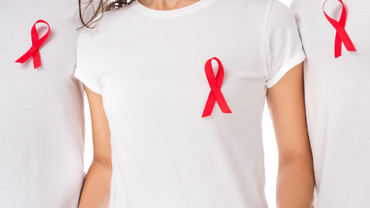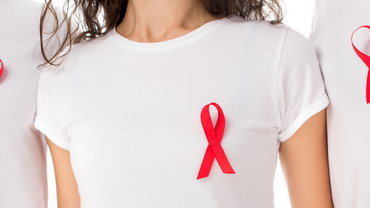Europe records highest number of new HIV cases in 2014
With over 142 000 people newly diagnosed with HIV in 2014, the WHO European Region recorded the highest number of newly diagnosed infections in one year since the start of reporting in the 1980s. In the countries of the EU/EEA, the HIV epidemic also persists largely unchanged.
Heterosexual transmission is responsible for the increase in eastern Europe, and transmission through drug injection remains substantial. In the countries of the European Union and European Economic Area (EU/EEA), sex between men is the predominant mode of HIV transmission. Two in three new HIV infections are among native-born Europeans, while foreign-born individuals, including migrants, represent only one third of HIV diagnoses.
“Despite all the efforts to fight HIV, this year the European Region has reached over 142 000 new HIV infections, the highest number ever. This is a serious concern”, says Dr Zsuzsanna Jakab, WHO Regional Director for Europe. “With all the evidence on HIV prevention and control, including new treatment guidelines, we call on European countries to take bold action and curb the HIV epidemic once and for all.”
“Since 2005, rates of new diagnoses have more than doubled in some EU/EEA countries and decreased by 25% in others. But the overall HIV epidemic persists largely unchanged”, points out ECDC Acting Director Dr Andrea Ammoni. “This means that the HIV response in the EU/EEA has not been effective enough to result in a noticeable decline over the last decade.”
Social exclusion places refugees and migrants at greater risk of HIV infection
During the last decade, the number of migrants diagnosed with HIV in Europe has declined sharplyii, and evidence shows that a significant proportion acquires HIV after arrival in Europe. “Refugees and migrants remain a priority for HIV prevention and care. Conflict and disasters should not affect access to HIV services for people living with HIV. When refugees and migrants are victim of social exclusion in receiving countries, they become more at risk of HIV infection, and this may lead them to engage in risk behaviours, with increased risk for infection. This risk is exacerbated by inadequate access to HIV services and fear of being stigmatized”, stresses Dr Jakab. “We at WHO urge all countries in Europe to offer HIV testing, prevention and treatment services to all refugees and migrants irrespective of their legal status. This is also the safest way to protect the resident population from HIV infection.”
Sex between men main transmission mode in EU/EEA
Despite specific prevention programmes that target men who have sex with men (MSM) in many European countries, sex between men is still the predominant mode of HIV transmission in the EU/EEA. “HIV diagnoses among men who have sex with men have been rising at an alarming rate from 30% in 2005 to 42% in 2014 with increases in all but six EU/EEA countries", highlights Dr Ammon. “Europe has to scale up its efforts to reach out to this group – this includes looking at new strategies such as pre-exposure prophylaxis for HIV and access to care for EU citizens residing in other EU countries.” In its new Guidance, ECDC identifies seven key services that have proven to effectively reduce and prevent HIV infections among MSM.
The obstacle to ending AIDS: late diagnosis
Almost half of HIV infections are diagnosed late throughout the European Region: this increases the risk of ill health, death and onward HIV transmission. The high number of AIDS cases in the East also confirms challenges related to late HIV diagnosis, delayed initiation of antiretroviral therapy (ART) and low treatment coverage.
The number AIDS cases is constantly going down in the EU/EEA. But two thirds of AIDS diagnoses reported in 2014 occurred at the same time or shortly after the HIV diagnosis which means that these people have been diagnosed when their immune system already started to fail. Migrants are more likely to be diagnosed late despite the fact that antiretroviral therapy is widely available for documented migrants. But only half of EU/EEA countries provide free treatment for undocumented migrants.
New global HIV guidelines improve prevention and treatment
In 2015, new WHO global HIV prevention and treatment guidelines were issued, suggesting that ART should be initiated in all people living with HIV, irrespective of their CD4 cell count. There is now strong evidence that early treatment is beneficial both for the health of treated individuals and in preventing onward HIV transmission.
However, early testing, support by trained lay providers and potential use of HIV self-testing should be scaled up in order to make this new opportunity available to infected people. This will ensure earlier diagnoses and treatment initiation, resulting in improved treatment outcomes and less disease and death.







